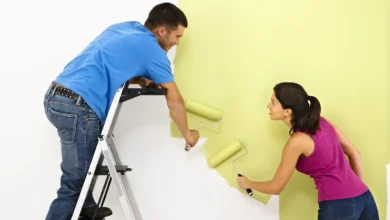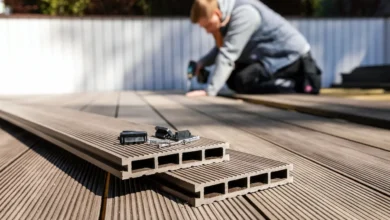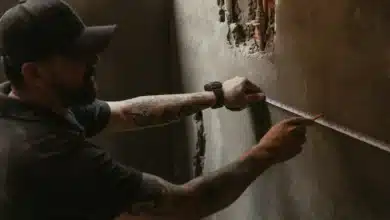Pattern tiles are having a real moment in Australia. They are bold. They are fun. They lift a space without a full renovation. Most of all, they let you show your style.
This guide walks through what they are, where they work, and how to choose well. You will find simple tips. You will also find traps to avoid.
What are pattern tiles?
Pattern tiles are tiles with a printed or inlaid design. The design can be geometric, floral, heritage, or minimalist. Some mimic the look of encaustic cement. Others rework classic motifs into a modern look.
You can use pattern tiles on floors or walls. They also suit small features that need a focal point. Think kitchen splashbacks and powder rooms. Think entry halls and laundry nooks.

Why people love them
They add personality in a single step. A small area can carry a strong pattern and still feel calm. The finish is tough and easy to clean. That helps in busy homes.
Pattern tiles also age well. Trends move, yet good motifs stay relevant. A soft geometric in a neutral tone will still look fresh in ten years.
Popular styles in Australia
- Encaustic looks: Chalky surfaces, muted colours, and heritage charm.
- Moroccan inspired: Curves, stars, and layered detail.
- Geometric: Lines, diamonds, and chevrons for a clean look.
- Floral and medallion: Gentle curves that work in period homes.
- Terrazzo effect: Speckled chips for a lively but subtle surface.
- Art deco reissues: Fan shapes and scallops for a touch of glamour.
Pick one that suits the age and style of your home. A 1920s bungalow can wear a medallion floor with pride. A new build can lean into soft geometrics.
Materials and finishes
You will see pattern tiles made from porcelain, ceramic, or cement. Each has a job it does best.
- Porcelain: Dense, low water absorption, and very durable. Great for floors and wet zones.
- Ceramic: Lighter and often used on walls. Easy to cut.
- Cement: True encaustic tiles with pigment through the body. They have a handmade feel. They need sealing and a bit more care.
Finishes vary. Matt gives a softer feel. Satin adds a gentle sheen. Gloss pops on walls but can be slippery underfoot. For floors, check the slip rating.
Where they work best
Bathroom:
Pattern tiles give a bathroom instant life. Use them on the floor and keep walls plain. Or flip it. A patterned splashback can make a small ensuite sing.
Kitchen:
A tiled splashback is easy to wipe clean. Patterns hide minor marks between wipes. On floors, choose porcelain with a suitable slip rating.
Laundry:
This space needs a lift. Pattern tiles turn a chore zone into something you enjoy. Keep cabinets simple to let the pattern stand out.
Entry and hallway:
First impressions matter. A patterned entry reads smart and welcoming. Borders can frame the area and act like a floor rug.
Outdoor areas:
Many porcelains suit patios and verandas. Choose tiles with the right surface grip. Check the product sheet for outdoor use.
Colour and scale tips
Start with your palette. Pull shades from nearby materials. Timber, benchtops, cabinetry, or wall paint can guide your choice. If in doubt, choose a base of grey, taupe, or soft white.
Scale matters. Large motifs suit large rooms. Smaller rooms do better with tighter repeats. Tiny patterns can get busy in big spaces.
Use pattern as the hero. Keep the rest simple. Plain tiles and solid colours are good partners.

Layout ideas that add polish
You do not need complex layouts for impact. Simple straight lay works well. A border tile can frame the field and give a finished look. You can also create a “tile rug” under a dining table or kitchen island.
Modular sets such as the French pattern bring a classic, irregular flow. They look great outdoors and in open living areas. If you go modular, plan the set-out before you start.
Grout and edge details
Grout can make or break a result. Choose a colour that blends if you want a calm surface. Pick contrast if you want the pattern to pop.
Check edge trims for exposed edges. Metal or porcelain trims help at doorways and steps. They protect the tile and look tidy.
Installation basics
Good preparation saves money later. Level the subfloor. Prime where needed. Ask your tiler to dry lay a few rows. That lets you confirm the set-out and the direction of the pattern.
Follow the adhesive and grout instructions. Some cement tiles need sealing before and after grouting. Porcelain may need only a final clean.
Maintenance that keeps tiles looking new
Sweep or vacuum grit. Use a pH neutral cleaner for routine mops. Avoid harsh chemicals and abrasive pads. Re-seal cement tiles as your supplier recommends.
In wet areas, check grout lines from time to time. A simple top-up can keep water out and surfaces looking crisp.
Budget and planning
Work out the square metres with a little extra for cuts and waste. Five to ten percent is normal. Complex layouts may need more. Add costs for trims, glue, grout, and sealer where relevant.
Samples help with choices. View them in daylight and at night. Lay them next to paint and benchtop samples. Small checks now prevent big regrets later.
Common mistakes to avoid
- Picking a pattern that clashes with the home’s style.
- Forgetting to check the slip rating for floors.
- Using too many bold elements in one room.
- Choosing a grout colour that fights the design.
- Skipping proper set-out at the start of the job.
A quick word on sustainability
Porcelain and ceramic tiles can last for decades. That reduces waste in the long run. Choose quality once and enjoy the result for years.
Inspiration and shopping
Ready to explore options and compare looks in one place? Browse a curated pattern tiles range to see shapes, colours, and finishes side by side. Shortlist favourites, then order samples to test at home.
FAQs about pattern tiles
Are pattern tiles too busy for small rooms?
Not if you manage tone and scale. Use lighter colours and a tighter repeat. Keep the rest of the palette simple.
Can I use pattern tiles on shower floors?
Yes, if the tile has an appropriate slip rating. Many mosaics and small formats suit shower bases.
What grout colour should I choose?
Match the background for a calm look. Go darker to hide marks. Use contrast if you want the design to stand out.
Do I need to seal pattern tiles?
Porcelain and most glazed ceramics do not need sealing. Cement tiles do. Always follow the product advice.
How many tiles should I order?
Allow five to ten percent extra for cuts and breakage. Complex layouts may need more.
Will pattern tiles date quickly?
Choose a motif that fits your home and palette. Timeless designs stay fresh longer than fast trends.
Can I mix patterns in one space?
Yes, with care. Keep a common colour family. Vary the scale so one pattern leads and the other supports.
What is the best way to clean them?
Use a soft broom or vacuum. Mop with a pH neutral cleaner. Rinse well and dry where possible.
Conclusion
Pattern tiles make rooms feel designed, not just decorated. They offer colour, texture, and personality in a hard-wearing finish. Pick the right motif. Plan the set-out. Match the grout with care. Do that and your floor or wall will look sharp for years.
If you are starting your shortlist, take your time with samples and light. A small square on a screen never tells the full story. Lay a few pieces on site and live with them for a day. The right choice will grow on you every time you walk past.




